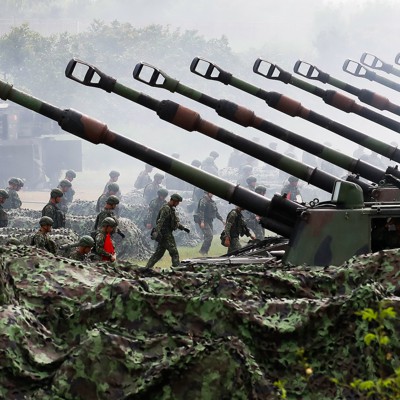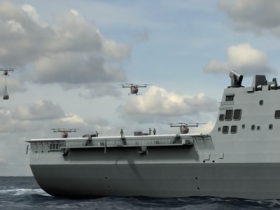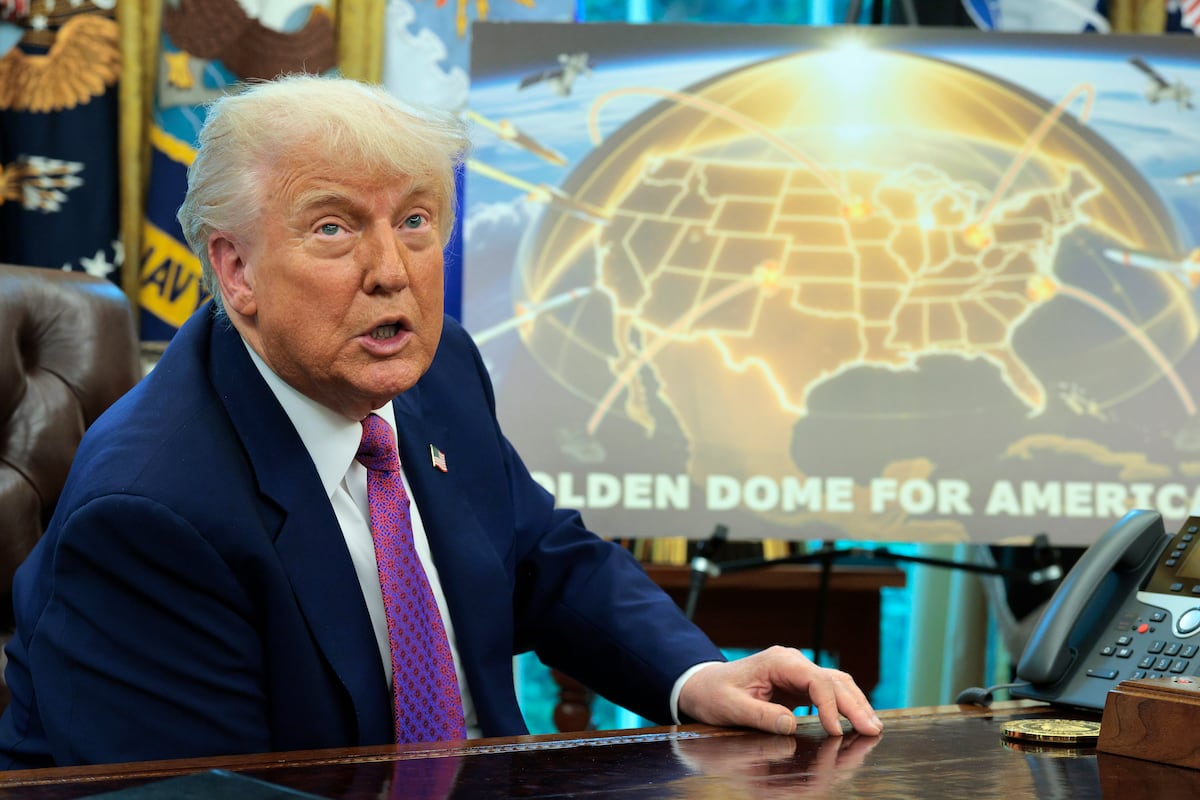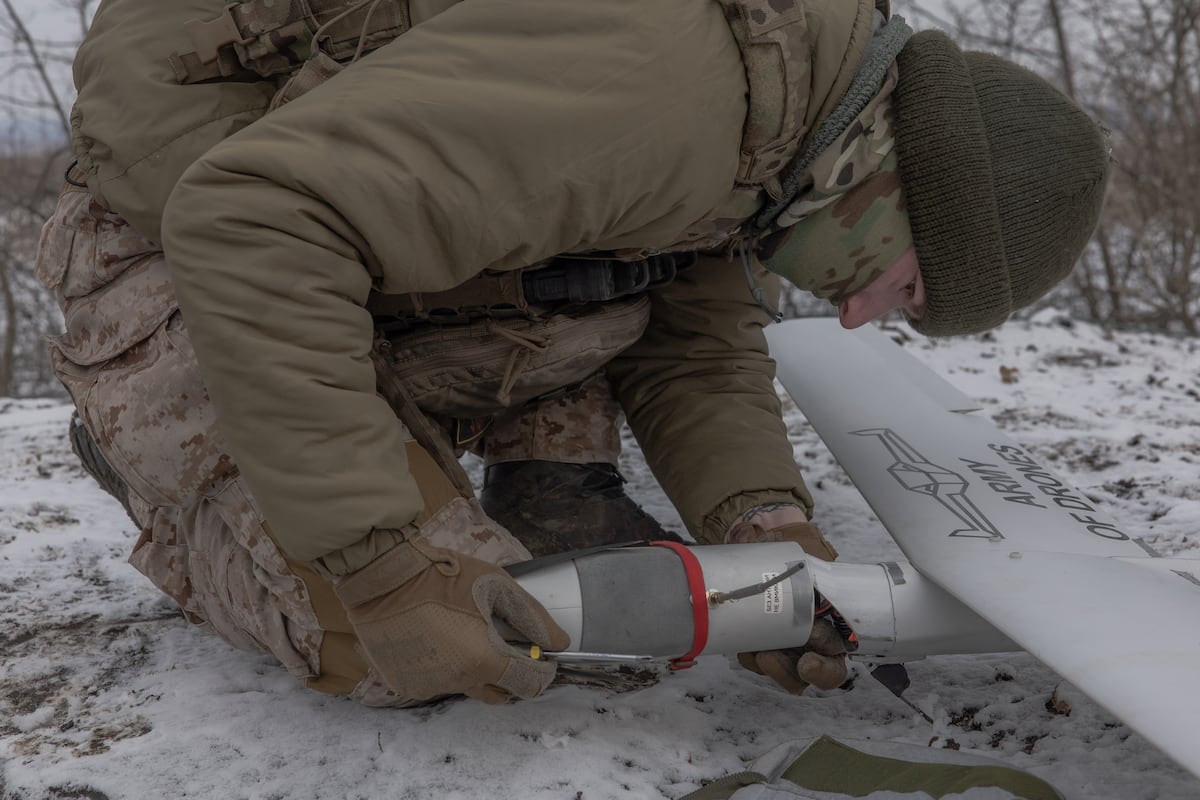Can the United States simultaneously arm Ukraine, Taiwan, and Israel without hollowing out its own arsenal? A new report by the Foundation for Defense of Democracies, shared exclusively ahead of publication with Defense One, says yes—for now. But, the report adds, the U.S. defense industry may not be able to keep it up without major reform and new investment.
The 89-page report, “Arsenal of Democracy: Arming Taiwan, Ukraine, and Israel While Strengthening the U.S. Industrial Base,” written by Ryan Brobst and Bradley Bowman, offers one of the most detailed inventories to date of where U.S. weapons go and how long it takes them to get there. After analyzing 25 weapons sent or expected to be sent to these three allies, the authors found that “there has not been a material delay in the delivery of the examined weapon systems to Taiwan or Israel because of American efforts to support Ukraine.” But that’s the good news.
They urge lawmakers, commanders, and the public not to think of U.S. weapons stockpiles as fixed, like a pantry shelf that grows barer as items are given away. Rather, they say, think of stockpiling weapons as a continuous act, like exercise that increases muscles’ ability to do work—but only with increasing inputs.
In some cases, providing arms to Ukraine pushed the United States to re-evaluate its approach to weapons development and to build capacity. For example, Lockheed Martin was able to respond to increased demand for its HIMARS rocket launcher from Kyiv and Taipei by doubling its annual production from 48 before Russia’s 2022 invasion to 96, enough so that Taiwan is now slated to have its orders filled faster than planned.
But the defense industry was less able to crank out other weapons. For instance, the shoulder-fired FIM-92 Stinger, out of production for decades, required a redesign to compensate for a no-longer-available seeker part, and high-rate production is not expected until next year.
And while the Joint Standoff Weapon remains in production, its annual rate is so low that Taiwan’s 2017 order may not be fulfilled until 2027.
The study looked at the supply chain that produced each of them, rating seven as “strong,” 14 “requiring attention,” and four “weak.”
“Without prudent reforms and substantial new investments,” Brobst and Bowman write, “the defense industrial base may not be capable of sustaining America’s role as the arsenal of democracy.”
The authors argue the U.S. defense budget has not grown enough, noting that 2022 saw “near post-World War II lows” as measured by percent of GDP. (In real terms, the budget has grown 48 percent since 2000.) They also point to industrial policy that encouraged consolidation and acquisition policy that encouraged “just-in-time” procurement.
“Consolidation and underinvestment have led to too few companies, gaps in the workforce, insufficient production infrastructure, and fragile supply chains,” they write, citing a 2024 House simulation of a Taiwan conflict where the U.S. ran short of rocket motors, circuit boards, and ball bearings.
They suggest increased Presidential draw-down authority to provide weapons for Taiwan; working with allies and partners to expand production; increase defense spending to build larger stockpiles before they are needed; make more items available via direct commercial sales, as opposed to more bureaucratic foreign military sales; decrease the time Congress has to consider foreign sales; and give the State Department deadlines to execute foreign sales deals (and mandate reports on how well they are moving those timelines up.)
Worries about continued U.S. support
The paper comes as Ukrainian officials worry the Trump administration’s reticence to send more weapons will leave them unable to enforce any ceasefire agreement that might be made with Russia.
Last week, Oleksandra Ustinova, Ukraine’s chair of the Parliamentary Special Commission on Arms Control, told reporters at a GMF event in Washington, D.C., that continued Russian attacks are undermining Ukraine’s negotiating position.
“They’re trying to exhaust our air defense, and this is what is critical for us”—U.S. air-defense weapons—”because nobody else can provide those to protect our civilians,” Ustinova said.
She said Ukraine’s biggest fear right now is that the “United States might shut down the third-party transfer” of PAC-2 and PAC-3 [Patriot Advanced Capability] missiles.
The top U.S. officer in Europe confirmed that.
“We’re basically the sole provider” of air-defense weapons to Ukraine, Gen. Chris Cavoli, the commander of United States European Command and Supreme Allied Commander Europe, told the Senate Armed Services Committee last week.
The FDD report’s conclusions stand in stark contrast to that of others who argue for reducing support to Ukraine in order to send more arms to Taiwan. Two such are Alexander Velez-Green, formerly of the Heritage Foundation and current acting defense undersecretary for policy, and Elbridge Colby, whom the Senate just voted to confirm for that position.
On Friday, the outlet 19FortyFive said intelligence sources are growing worried that China, which recently mounted a live-fire exercise near Taiwan, may attempt an invasion in the coming months.
Bowman argued the U.S. should not reduce support for Ukraine, but instead invest in ways to boost arms production—both at home and in allied countries.
“The American me says you always want to arm our troops first. But if the goal is to defeat or deter aggression, the right answer for where you send the next Javelin or where you send the next missile” might be to a partner that is more likely to be the direct target of an attack, he said in an interview. “There might be an argument to be made that the best deterrent is giving at least some portion of those [weapons] coming off the line first to our partners who are actually throwing punches, currently.”
In his Senate testimony, Cavoli said a Chinese attack on Taiwan would likely trigger increased Russian aggression in Eastern Europe. Moscow, he said, would “turn the situation to its advantage and to seize opportunity. So depending on the exact parameters of a conflict with China, exactly what the conditions were, I would expect Russia to try to take advantage of that, either in the information domain or even physically.”
Read the full article here








Leave a Reply